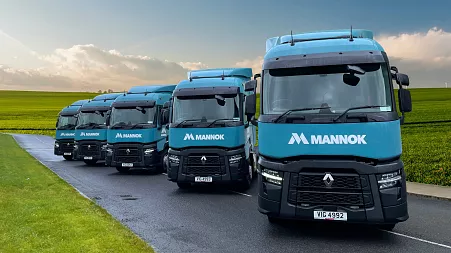A balmy Thursday afternoon in Wimbledon may not seem the perfect time for buying woollen trousers and fluffy jumpers. There were, however, a few takers at Uniqlo.
Olivia, a 23-year-old Londoner, was picking up a few cardigans for the autumn season so she was “prepared” for when colder weather hits.
At Uniqlo, there are questions not just about when customers will start to buy for each season but how. The Japanese fast fashion brand has been installing self-service checkouts across its shops, mimicking the controversial technology that has been adopted in supermarkets.
Unlike in supermarkets, however, customers don’t need to scan bar codes. Simply dump items into the self-checkouts’ built-in bucket and the futuristic tech registers them automatically. Uniqlo claims the system can cut transaction times in half.
It is not the only fashion retailer mimicking the supermarkets. All across the high street, self-checkout stations are being installed at retail shops. Marks & Spencer, Primark and Zara – some of the earliest adopters – have been expanding their use of the technology, while others such as JD Sports are beginning to introduce self-checkouts.
The embrace comes despite doubts about the technology emerging in the supermarket sector, which was the first to champion these tills. Both Asda and Morrisons have started to rein in their use of the technology in recent months.
Booths, a northern rival to Waitrose, ditched them altogether last year, saying: “Colleagues serving customers delivers a better customer experience.” In the US, retailers including Target have also started to remove the checkouts amid concerns about shoplifting.
Between the end of 2020 and 2023, the number of self-checkouts in UK shops went from 65,000 to almost 90,000, according to figures from RBR Data Services, a division of Datos Insights. Much of this growth was driven by fashion retailers, rather than supermarkets.
“It’s become more in demand from our shoppers,” says JD Sports’ Paul Orange. After a trial at its shop at Bluewater, Kent, the company now has the technology installed in three of its locations. “For us, it’s actually as much about our customers getting comfortable with self-checkouts as it is about us adopting the technology,” says Orange.
For now, JD Sports is monitoring customer reaction before deciding whether to roll-out the technology further.
At M&S, bosses have announced plans to install self-checkout tills at dozens more shops to “offer customers new ways to pay to make shopping with M&S quicker, easier and more convenient”.
However, perhaps mindful of potential backlash, the company said customers would still have the option to pay at its manned tills.
Among retail experts, there is some scepticism. Companies may say their shoppers want choice but experts believe the real motive for installing self-checkouts is cost cutting.
“It’s about labour costs,” says Shore Capital analyst Clive Black. “In my opinion, that’s what the driving factor is.”
Many retail workers are on minimum wage, which saw the largest ever cash uplift in history in April, rising from £10.42 to £11.44 an hour. Another significant increase is expected to be announced in the autumn.
“The cost of labour, particularly in the UK, has skyrocketed in the last five years and so there’s a real incentive to look at how many people you’re employing and where you have them in shops,” says Black.
Post-pandemic, many lower paid industries including retail and hospitality have also struggled to recruit, amid record levels of worklessness and following an exodus of EU workers during Covid.
In its annual report, Primark said self-checkout technology can help to “relieve recruitment pressures faced by the business in a tight labour market”.
The terminals “free up colleagues to focus on where they are most needed – for example, re-stocking the shop floor, helping customers or manning fitting rooms”.
However, adopting self-service tills may come with its own challenges. Retail crime rates are at a 20-year-high and monitoring thefts may be more difficult when workers are moved away from tills.
Survey data suggest that shoplifters are as much as 21 times more likely to get items past a machine than a member of staff. A report from Ipsos earlier this month [August] revealed that one in eight adults have admitted to putting through items as cheaper alternatives when using self-service tills. It is a scam known as the “banana trick”.
In supermarkets, such scams might not generate a huge loss. But in retail much higher value items could be targeted.
Many fashion retailers are investing in high-tech stations that use radio-frequency identification (RFID) chips embedded in price tags to ensure customers aren’t passing off items as cheaper alternatives.
These chips are automatically read by the self-service machines when customers place them in the station. In theory, this should eliminate any risk of people pulling the “banana trick”.
Yet no system is perfect. Bloomberg last year claimed Zara had been forced to slightly delay its rollout of the system after it found that the chips were easy to identify and remove. Its owner Inditex downplayed any issues, saying the rollout was “going to plan without any significant incidents”.
Christopher Andrews, an associate professor at Drew University who has written about supermarket self-checkouts, says people will always be central to any system meant to deter theft.
“Having an RFID scanner on a piece of clothing is only going to be effective if there is some way to prevent the customer from walking out of the shop after they set off the security alarms,” he says.
Having workers at tills can have other benefits beyond simply deterring scammers and thieves.
James Daunt, who runs Waterstones, says his business relies “entirely on our booksellers and the service they give for the quality of our bookshops”.
He adds: “Machines will never replace them, whether self-service checkouts or information terminals.”
Campaigners say it is crucial that customers are still able to find shop assistants to help them, particularly for older shoppers.
“They like to have a friendly face there for the shopping experience,” says Dennis Reed, from senior citizen group Silver Voices. “If the whole thing is dehumanised, then why would people go into shops? They might as well order things online.”
It is not just older people who are lukewarm at best about self-checkouts.
Back in Wimbledon, west London, Gen Z Olivia is among those queuing to be served by a shop assistant. Most of the high-tech stations remain empty. One is surrounded by a cluster of middle-aged women peering anxiously at a receipt. “It’s maybe not the most seamless system yet,” Olivia shrugs.
Disclaimer: The copyright of this article belongs to the original author. Reposting this article is solely for the purpose of information dissemination and does not constitute any investment advice. If there is any infringement, please contact us immediately. We will make corrections or deletions as necessary. Thank you.



